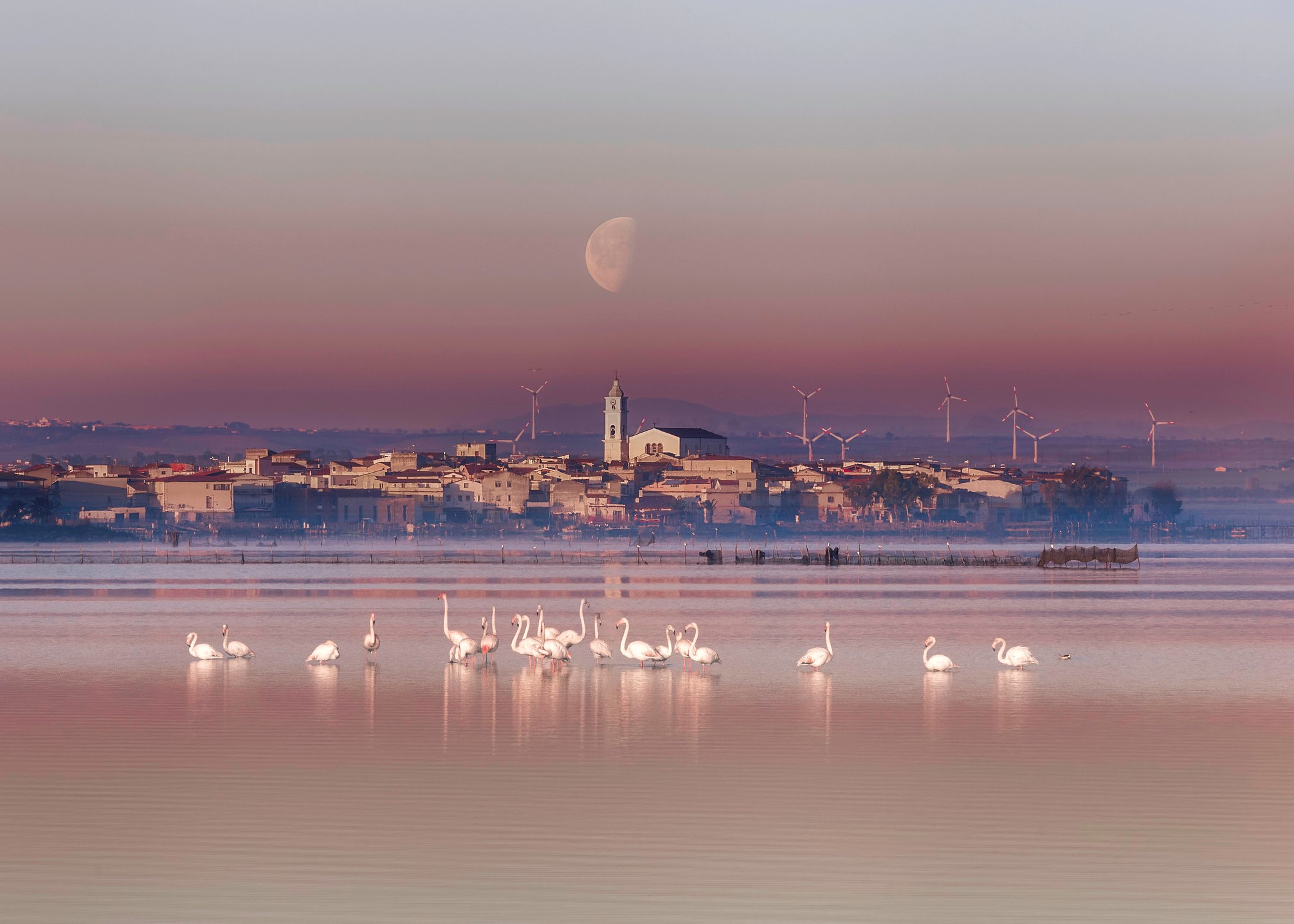
In Apulia, land of centuries-old olive groves and an uncontaminated sea, Lake Lesina lies between the Tavoliere delle Puglie Plain and the Gargano Promontory. An evocative, salted lake 12.5 miles long, it is separated from the Adriatic Sea by a sandy, wooded strip of land known as Bosco Isola, the formation of which contributed to deposits from flooding of the Fortore River.
The lake connects to the sea by way of three estuaries: the Schiapparo, the Sant’Andrea, and the Acquarotta. Among the most interesting zones is that which lies to the Lake’s east: the Natural Reserve of Lake Lesina, an area established and protected by the State since 1981, particularly with the goal of animal recolonization. The Reserve expands over 930 hectares, and is an important component of the National Park of Gargano.
The land surrounding the lake was already inhabited in prehistory, during the Neolithic period. Remains from the Bronze and Iron Ages have been found along the coasts, and finds dating back to said periods were discovered on the Devio Hill (827 ft high) that divides the Lakes of Lesina and Varano.
The Lake’s waters abound with fish, including fingerlings, mullet, prawns, orata or bream, bass, and eel, all of which are numerous and represent the livelihood of those inhabiting Lesina’s environs.
Besides fishing, another activity common to this community is birdwatching – some of the fascinating ornithological species maintaining their nests in these parts are the slender-billed gull, flamingo, kingfisher, and the Western Marsh-harrier.
Near the Lake are characteristic comunes like Lesina, Poggio Imperiale, Apricena, Serracapriola and San Paolo di Civitate.
Lesina stands on a slight peninsula on the lake’s shore, and its temperate climate and pristine nature attract many a tourist, as does its enchanting architecture: Palazzo Vescovile, the Abbey of Santa Maria di Ripalta, and the complex of volcanic rock known as Pietre Nere and dating back to the Triassic period. Just a few miles away, we can find Marina di Lesina, a charming resort with camping grounds, the typical italian villaggio turistico (a type of vacation establishment), and water parks.
In Poggio Imperiale, rather, north of the Tavoliere, visitors should look for the Sanctuary of San Nazzario, the Chiesa Madre, and the Principe Placido Imperiale Monument.
Serracapriola is closer to the sea, and is the location of a Capuchin Monastery frequented by St. Pius of Pietrelcina, one of Italy’s most venerated saints.
Then, Apricena, whose origins lie somewhere around the 8th Century A.D., is famous for its marble caves. The name Apricena derives from a word in the local dialect for boars, an animal that is present in high numbers in this area. After seeing the historic center, be sure to visit Palazzo Baronale, built atop the remains of the Castle of Frederick II; the Castello Pagano, constructed by the Normans; and the Parochial Church, safeguarding a precious icon of the Madonna and Child.
The first settlement in San Paolo di Civitate arose in the First Millennium B.C., realized by the Dauni tribe. Conquered by the Romans, the zone later endured domination by the Byzantines, Longobards and Normans. It then became a bishop’s seat in the 9th Century. The current city center was originally called San Paolo dei Greci, when it was inhabited by an Albanian colony during the second half of the 15th Century.



